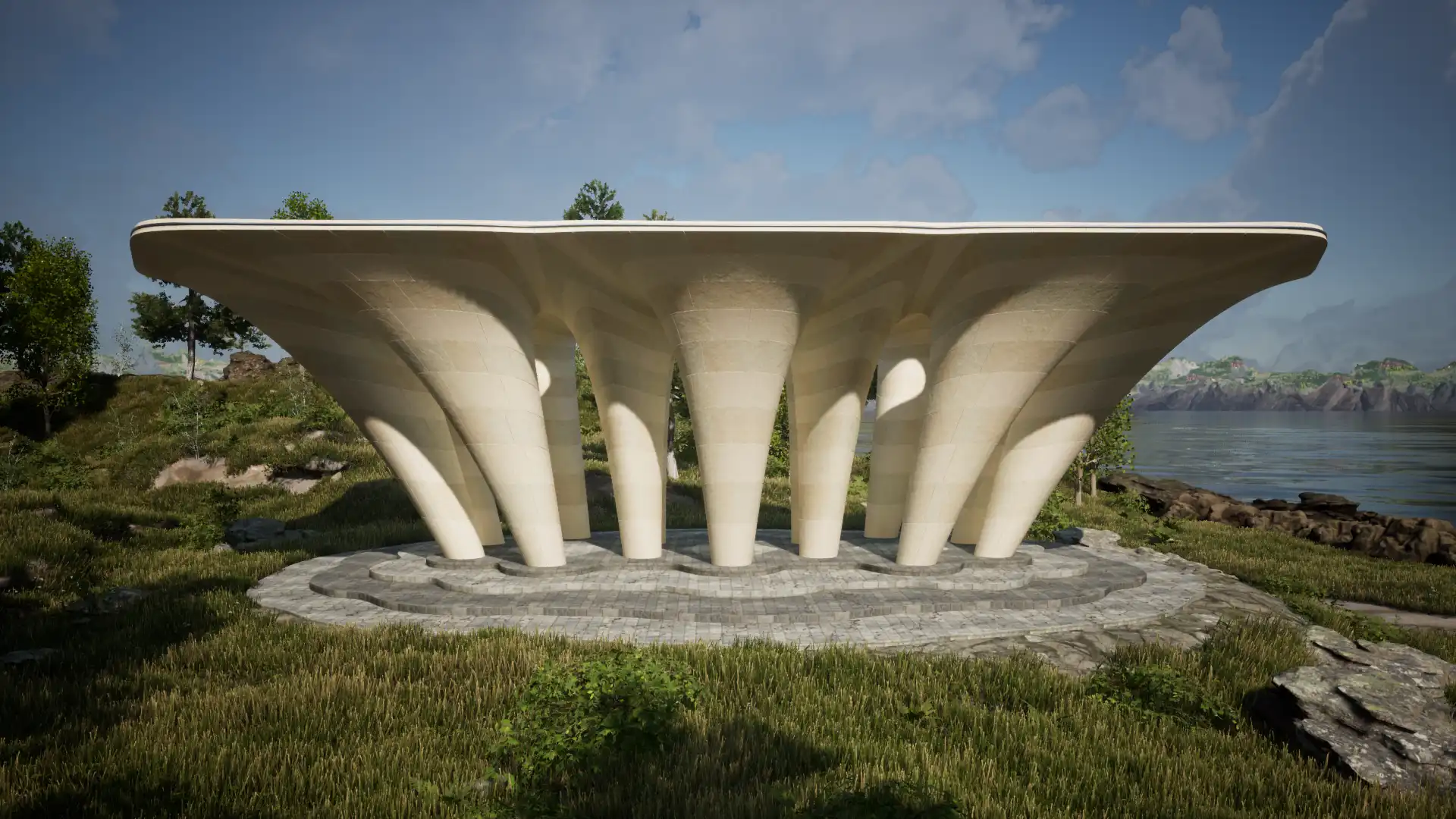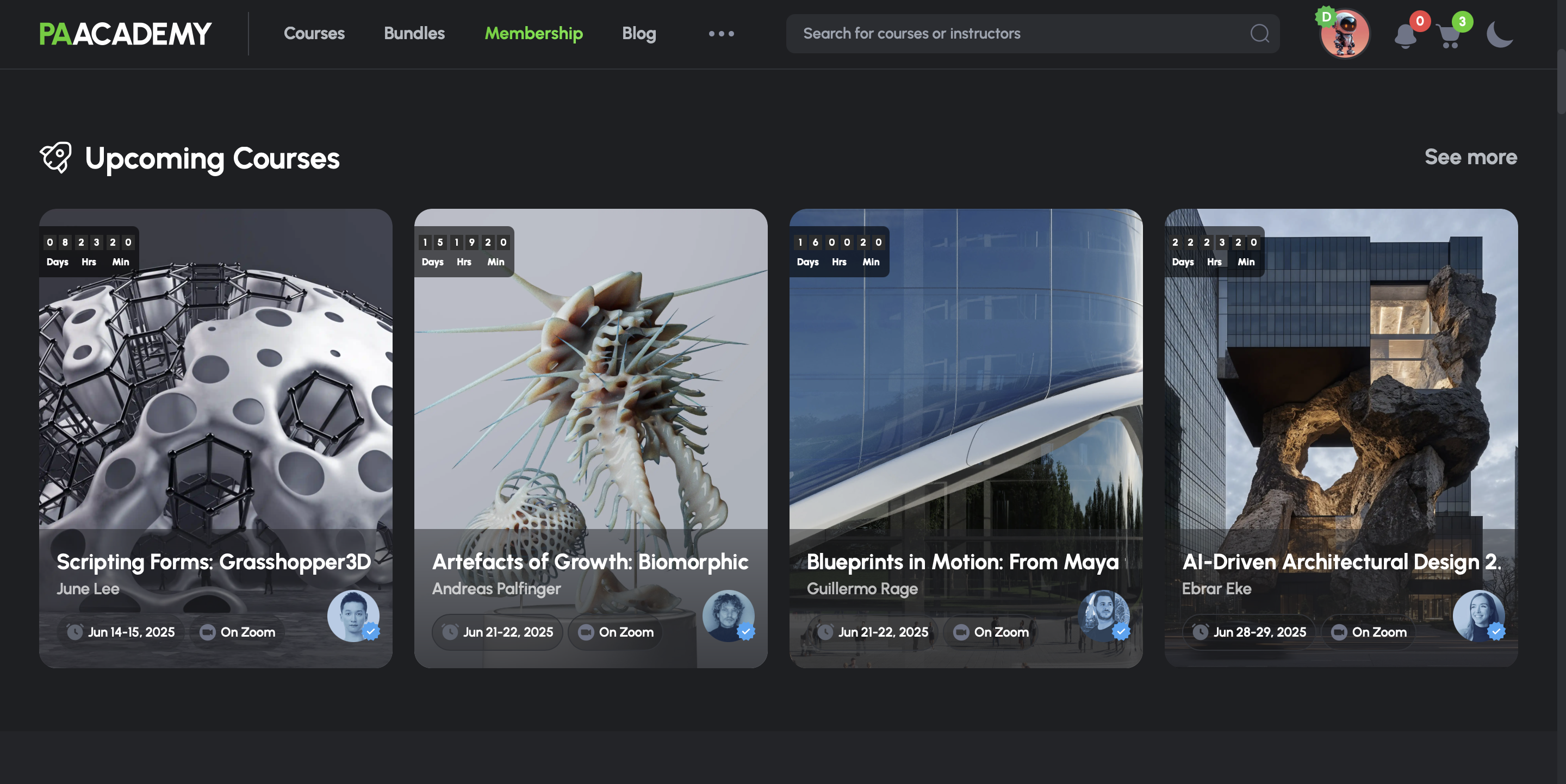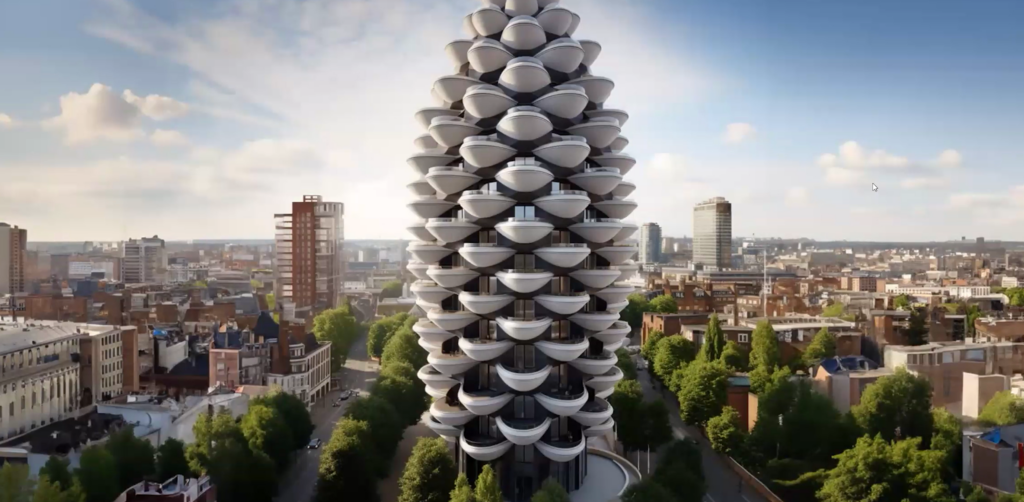Hamid Hassanzadeh is the Founder and CEO of ParametricArchitecture, a global platform that shares knowledge and information on advancing computational design, AI and emerging technologies in architecture. He also leads PAACADEMY, an educational platform and worldwide community of designers, thinkers and innovators shaping the future of architecture.
If you step into a design studio shaped by tomorrow’s thinking, you won’t find rows of students hunched over drawing boards or endlessly adjusting curtain walls in a static digital modeling environment. Instead, you’ll see systems evolving in real time. You’ll see sketches coaxed into form by artificial intelligence, parameters defining the limits of geometry, and ideas unfolding through code. In this space, design is no longer a solitary act, and it is a dialogue between intuition and technology, creativity and computation.
If education is meant to prepare designers for the world they will inherit, then it must reflect this transformation. And yet, many architecture and design programs remain suspended in outdated pedagogies, keeping students fluent in documentation but disconnected from the very tools that drive contemporary practice further. The result is a widening gap between potential and preparedness, between future vision and conventional execution.
To close that gap, design education must become more than informative, and it must become adaptive, dynamic and profoundly technological, asking not only what design looks like, but how it thinks.
If Technology Is the New Studio Partner
“Architectural Follies” Workshop by PAACADEMY | Image © Yerwant Megurditchian
The discipline of architecture has always evolved alongside the tools that shape it. But in today’s environment, those tools are no longer just instruments, and they are collaborators. Artificial intelligence and computational design are rewriting the rules, not by replacing the designer, but by expanding the field’s potential in which they operate.
If you’re using platforms like Midjourney, Stable Diffusion or Runway, you’re not just generating visuals; you’re designing with a partner that can process thousands of visual variables in moments. If you’re working in Grasshopper3D, you’re building not just a model, but a responsive system, an entity made of a set of rules that adapts and evolves with each parameter you adjust.
These tools enable new workflows, aesthetics and relationships with data, and they invite designers to merge form and function as fluid, interrelated constructs rather than fixed endpoints. If students are to navigate this terrain, their education must initially equip them with the ability to code, script, simulate, and iterate as naturally as they once sketched.
If Creativity Begins Before the Concept

“Eco-Parametric Structures” Workshop by PAACADEMY | Image © Eliana Nigro, Marc-Antoine Chartier-Primeau
In traditional architecture and design studios, creativity often initiates at the moment of form and contextual understanding of projects. But in today’s studios, it begins at the level of logic, at the prompt, the algorithm, the script and understanding the contextual needs in the form of data and code. Creativity is no longer a singular event; it is a layered experiment that unfolds over constant iteration, shaped by variables, constraints and interactions between human and machine.
If you observe students trained in computational workflows, you’ll notice their creativity manifesting not only in what they draw but also in how they build systems to explore what could be drawn. They test variations, analyze performance, and refine outputs through iterative loops. They do not simply draw a building, but they construct a framework from which multiple possibilities can actually emerge.
If design is to remain a process of discovery, then it must be taught as such, and that requires an environment where experimentation is not just allowed but expected, where tools are not separate from the thinking process but embedded within it.
If Schools Resist Change, Students Risk Stagnation

“The Stone Architecture” Workshop by PAACADEMY | Image © Aris Kastorinis
Despite the evolution in tools and theories, most architecture schools remain anchored in legacy workflows. Drafting courses, software tutorials and studio critiques often remain unchanged from decades past, and if that remains the case, students risk graduating into a profession for which they are unprepared to meaningfully engage.
The industry’s expectations have shifted. Design studios now require proficiency in parametric modeling, knowledge of Building Information Modeling (BIM), fluency in AI-based rendering and the ability to generate performance-informed solutions. If current architects, emerging professionals and students are not trained in these new workflows, they will lack the critical ability of design adaptability within the evolving industry. That being said, their creative potential will also be bottlenecked and narrowed before they even dig deeper into the practice.
To respond to this, education must become a dynamic system, capable of adapting, integrating new technologies, and fostering multidisciplinary thinking. If schools cannot provide that, then alternative platforms must step forward.
If the Future Is Already Here, What Comes Next?

Image courtesy of PAACADEMY
The pace of transformation in architecture and design is unmistakable, yet many academic institutions remain rooted in outdated systems, constrained by high costs, rigid structures and an inability to adapt quickly. For most professionals, returning to a full master’s program simply to learn AI workflows or computational logic is neither practical nor appealing.
If schools continue to fall behind, the burden of adaptation shifts elsewhere. The industry, and the designers within it, must seek alternatives that are flexible, affordable, and aligned with real-world innovation. This is where new models emerge, platforms that are nimble enough to evolve with the field, yet structured enough to deliver depth.
Among them, PAACADEMY stands out quietly but decisively. Its programs are not about repeating what universities already offer. They are built for the tools and challenges of today. Courses like Parametric Intelligence, Diffusion Architect, Computational Mindset, Generative Architecture with AI and Eco-Parametric Structures move beyond software tutorials to cultivate systems thinking, spatial intelligence and design fluency through live, project-based instruction.
If you’re an architect or designer navigating a rapidly shifting profession, PAACADEMY offers a way forward, one that doesn’t require starting over, but starting smarter. Its immersive format brings clarity to complexity, allowing students to build lasting frameworks instead of chasing trends. In doing so, it becomes more than an educational platform. It becomes a necessary bridge between where design education stands and where the profession is already heading.
If We Are To Design Intelligently, We Must Learn Intelligently

Image © PAACADEMY
Architecture today asks more of architects than ever before. It asks them not only to envision form but also to understand systems, read data, collaborate with machines, build efficiently and design with an intelligence that extends beyond intuition. If artificial intelligence is advancing by the hour, and computational design becomes the new literacy of spatial practice, then learning must evolve with the same intensity and curiosity. If the goal is to shape the future rather than simply catch up to it, then designers must be given access not only to tools but also to mindsets that thrive on change.
The next generation of architects will not be defined by how well they replicate old methods, but by how boldly they engage with the unknown. And if the educational paths that once served the profession no longer match its momentum, new paths must be carved, quietly, thoughtfully and urgently.
For those ready to begin, the future isn’t waiting. It’s already unfolding.
For more ways to supercharge your workflow, check out more articles in our Tech for Architects series, which includes our recommendations of Top Laptops for Architects and Designers.

